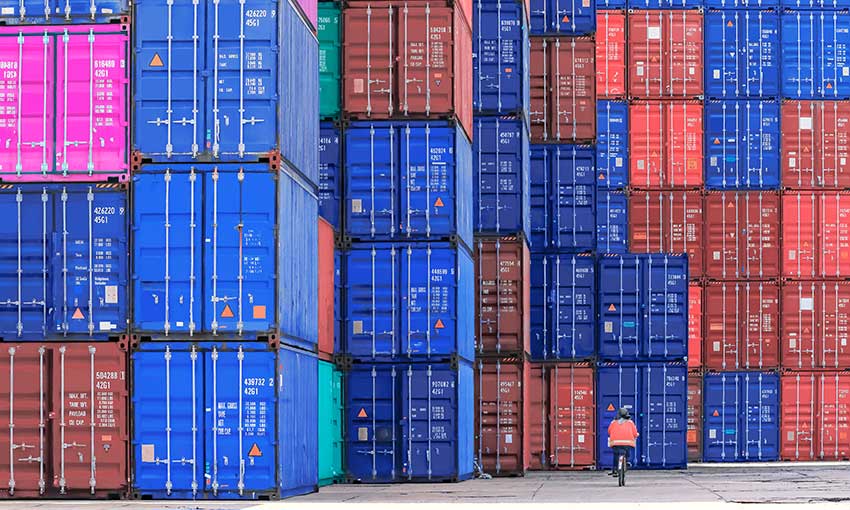OVER many years container cleanliness and so-called hitchhiker pests have been issues in the container logistics industry. They have been bubbling away under the surface, with some countries implementing strict biosecurity measures but many others not. It now seems that more countries want to adopt stricter guidelines that will have far-reaching consequences for the smooth flow of the 17 million or so sea containers currently being shipped across the globe.
International agreements
The International Plant Protection Convention (IPPC) is an intergovernmental treaty (and part of the UN) signed by more than 180 countries. It aims to protect the world’s plant resources from the introduction and spread of pests and promotes safe trade. Australia is a member of the IPPC. To implement the IPPC standards the Commission on Phytosanitary Measures (CPM) was established.
The CPM promotes the full implementation of the convention’s objectives, including reviewing the state of plant protection in the world and actions to control the international spread of pests and their introduction into endangered areas; establishing and keeping under review the necessary institutional arrangements and procedures for the development and adoption of international standards; and adopting international standards.
A separate CPM focus group on sea containers is dealing with cleanliness of sea containers. This focus group has recently produced a report with recommendations, to be implemented in 2024, which could revolutionise the way containers are handled.
In Australia
Australia has one of the world’s strictest biosecurity regulations and for good reason. It has been estimated that if a harmful infestation occurs, it could cost the Australian agricultural sector billions of dollars and damage our reputation as a supplier of clean agricultural products. To prevent these so-called hitchhiker pests from entering our country the Department of Agriculture, Fisheries and Forestry (DAFF) has a biosecurity section which manages the risk of these pests and other harmful biological matter entering the country. Pests such as the giant African snail (GAS), red fire ants, African swine fever, foot and mouth disease, insects such as the khapra beetle and the brown marmorated stink bug, and other incursions such as harmful seeds can, and sometimes do occur, at our airports and sea borders.
In July this year, the IPPC will hold an international workshop on sea containers in Brisbane where industry stakeholders such as container owners, shipping lines, container manufacturers, freight forwarders, port authorities, marine terminal operators, shippers, importers, exporters and biosecurity experts from around the world will discuss how best to implement the recommendations of the CPM focus group on sea containers. DAFF and several Australian industry associations will play a leading role at the workshop.
Who is responsible?
The CPM focus group has suggested several draft recommendations such as the concept of “custodial responsibility” where stakeholders in the container supply chain are held responsible for the cleanliness at each interchange point (where custody of the container changes). This could be at the empty container park, shipper, transport operator, container terminal or on board of a vessel, to name a few.
Another draft recommendation is the use of “verified pest prevention declarations”. This proposal was developed by the World Shipping Council and would require exporters or their forwarding agents to present a signed declaration to the transport operator that a container was pest-free at the time of shipment, otherwise the container would not be accepted for carriage. This proposal appears to be closely modelled on existing verified gross mass declarations (where the weight of the export container needs to be declared before it is accepted for shipment at an Australian container terminal). It would use the internationally developed Code of Practice for Packing of Cargo Transport Units as a guide to minimise visible pest contamination and thereby reduce the risk of pest introduction by containers moving internationally. The current practice at Australian container terminals is “no VGM no shipment”. This rule would be similarly applicable to the VPP.
A clean container
What constitutes a ‘clean’ container? Is it just a visual inspection of the outside and inside of a container or a more thorough investigation? Some hitchhiker pests are easy to detect, for instance the GAS is easy to spot, usually on the outside of the container, and can be removed easily (or contained by placing a ring of salt around the container). The khapra beetle (and its eggs) however are more difficult to spot and can live for several years without food and hide undetected in cracks and under the floors of sea containers. To assess what risk of infestation each import container presents will be that much more difficult.
The issue for all stakeholders in the container logistics chain is how will they cope with these potential new regulations and not delay the flow of the 17 million containers or add additional costs. Having containers delayed because the status of their cleanliness is unclear can create bottlenecks at each interchange point. Furthermore, there is the issue of occupational health and safety; we can’t expect people to climb on top of containers or crawl under them to assess if there is any dirt or insects attached to the container. Hopefully new technologies and data analysis can help in detecting these infestations.
Consequently, the conference in Brisbane in July is tasked to come up with solutions that, whilst minimising the threat of infestations entering a country, will ensure an efficient movement of the container at each interchange point. A consensus must be reached between the biosecurity experts and those involved in the container logistics chain.

